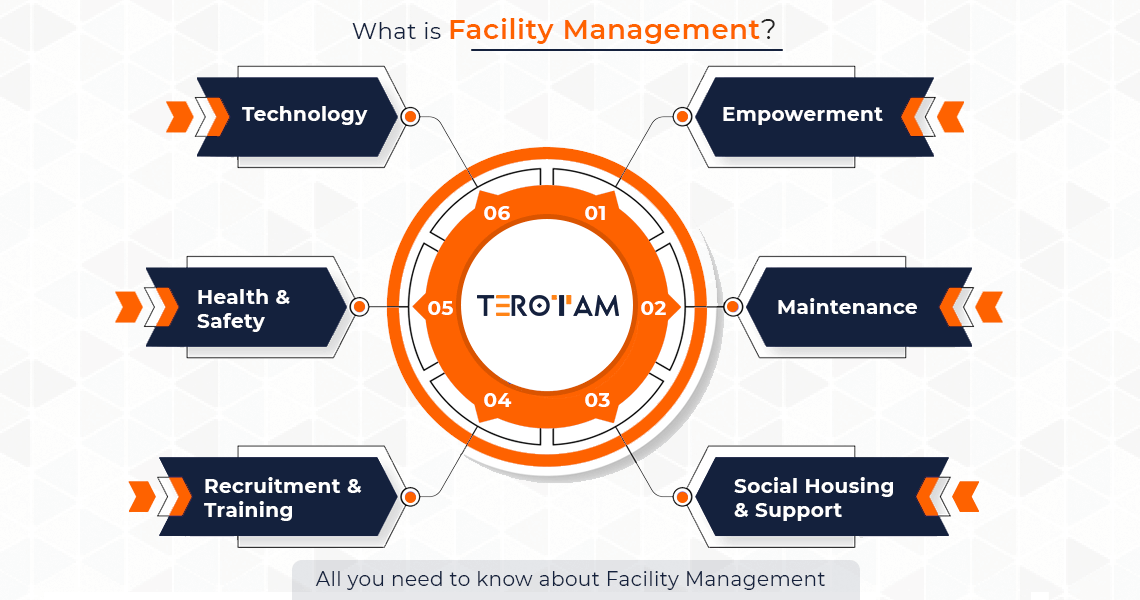The Essential Overview to Center Monitoring: Methods for Success
Center administration plays a vital function in the general success of an organization, acting as the foundation that sustains security, efficiency, and productivity. By using calculated techniques such as integrated technical services and fostering cross-departmental cooperation, organizations can significantly boost their operational foundations. Nevertheless, the subtleties of efficient center administration extend past mere logistics and call for an extensive understanding of both quantitative and qualitative metrics. As we explore these crucial techniques, a closer examination exposes just how they can transform not simply centers, but the actual society within an organization itself. What might these makeovers look like in method?
Recognizing Facility Management
What constitutes effective facility administration? Efficient facility administration includes the sychronisation of different business features to make sure that developed atmospheres are risk-free, effective, and favorable to efficiency. It integrates the principles of architecture, organization, and engineering monitoring to create a seamless functional circulation within an organization.
Crucial element of facility administration consist of room planning, maintenance administration, and conformity with wellness and safety policies. Area preparation concentrates on maximizing making use of physical resources to support business objectives, while upkeep monitoring ensures that facilities are kept in optimal condition, making best use of lifespan and decreasing operational costs. Compliance with legal and regulatory requirements is important, as it safeguards the company against prospective obligations and improves its track record.
Moreover, efficient facility administration counts on the tactical use of technology, such as Building Monitoring Equipment (BMS) and Computer-Aided Center Administration (CAFM) tools. These technologies help with real-time monitoring of structure systems and enhance upkeep processes (Facility Management). Ultimately, a comprehensive approach to center administration not only promotes functional effectiveness but likewise promotes a positive environment for workers and visitors alike, driving overall organizational success

Trick Strategies for Optimization
Optimizing center monitoring requires a strategic strategy that lines up functional exercise with organizational objectives. To accomplish this, the very first vital technique is the execution of integrated technical options. Making use of advanced software program systems enables for real-time surveillance of center procedures, facilitating data-driven decision-making and improving total effectiveness.
Second of all, routine evaluations of center performance are important. Performing regular inspections and audits makes it possible for facility supervisors to recognize areas that need enhancement, ensuring that sources are allocated effectively. This positive technique assists in minimizing downtime and boosting service shipment.
One more crucial approach is fostering cooperation throughout departments. By urging open interaction between teams, facility managers can much better align their approaches with service objectives, leading to enhanced functional synergy. Furthermore, involving staff in training programs advertises a society of responsibility and boosts their ability to contribute to optimization initiatives.
Enhancing Safety And Security Procedures
Reinforcing security protocols is vital for creating a secure setting within facilities. A comprehensive safety method not only shields visitors and employees yet additionally enhances operational effectiveness. Facility Management. To attain this, center supervisors should conduct regular danger assessments to make certain and identify potential threats that ideal steps remain in location

Furthermore, clear communication networks hop over to here must be established to report security concerns without delay. This consists of developing an easily accessible system for employees to voice possible threats or occurrences without fear of . Leveraging modern technology can improve safety actions; for example, executing surveillance systems and gain access to controls aids monitor center activities and limit unauthorized entrance.
Last but not least, conformity with regional guidelines and sector criteria is non-negotiable. Normal audits and evaluations of safety methods guarantee placement with current laws and best practices. By focusing on these approaches, facility supervisors can grow a culture of security that secures all stakeholders and inevitably adds to the organization's success.
Improving Office Setting
A favorable workplace environment considerably enhances staff member spirits and performance, making it an essential emphasis for facility monitoring. To create such an atmosphere, facility supervisors need to focus on a number of crucial elements, including functional designs, aesthetic appeals, and worker interaction.
Ergonomic considerations are vital to minimize physical pressure and discomfort. This entails supplying adjustable furnishings, proper lighting, and appropriate space for activity. These adjustments can cause reduced absenteeism and boosted job satisfaction.
Looks play an important role in shaping the office atmosphere. Using color psychology, natural lights, and greenery can cultivate a inviting and boosting atmosphere. Thoughtfully created areas can increase imagination and boost overall wellness.
Moreover, urging staff member interaction with comprehensive decision-making procedures can boost the feeling of ownership and belonging. Collecting comments on office enhancements and including staff members in the style procedure can result in an extra tailored setting that meets their demands.
Lastly, promoting health efforts, such as health cares and relaxation rooms, can even more add to a helpful office look at this now society. By concentrating on these approaches, center managers can properly boost the office environment, driving both employee satisfaction and business success.
Determining Success in Facilities
Determining success in center administration needs an extensive approach that assesses both qualitative and measurable metrics. Measurable metrics normally include essential efficiency indications (KPIs) such as room utilization rates, power intake, upkeep costs, and tenancy degrees. These metrics provide a clear image of operational efficiency and monetary performance, allowing facility managers to identify areas for enhancement and benchmark versus sector standards.
Qualitative metrics, on the other hand, concentrate on individual fulfillment and worker interaction. Studies and comments mechanisms can assess exactly how well the facilities satisfy the requirements of passengers, assisting to assess the overall workplace setting. This aspect is critical, as a satisfied workforce is usually connected to increased productivity and retention rates.
To properly gauge success, center supervisors ought to additionally take into consideration incorporating technology, such as developing administration systems and data analytics tools, to gather and evaluate relevant information. Regularly assessing both collections of metrics permits a much more well balanced sight of performance and educates critical choices. Ultimately, a successful facility administration approach rests on a dedication to constant renovation, making certain that both operational efficiencies and individual complete satisfaction are prioritized.

Verdict
Finally, reliable center administration is crucial for improving organizational efficiency. By executing incorporated technological remedies, conducting regular analyses, and promoting partnership across departments, companies can achieve optimum resource allocation and operational effectiveness. Focusing on safety and security methods and enhancing work environment settings additionally contribute to boosted worker contentment. Finally, measuring success via both measurable and qualitative metrics allows for continuous renovation, ultimately bring about decreased functional costs and an extra productive organizational ambience.
Facility administration plays an essential role in the overall success of an organization, serving as the backbone that supports safety and security, performance, and efficiency.Trick components of center administration include area planning, maintenance management, and conformity with wellness and security guidelines.Moreover, efficient facility management counts on the critical usage of innovation, such as Building Management Equipment (BMS) and Computer-Aided Center Administration (CAFM) tools. Ultimately, a comprehensive strategy to center administration not only advertises operational efficiency yet likewise promotes a positive setting for workers and visitors alike, driving overall business success.
Eventually, a successful center administration strategy pivots on a commitment to continual enhancement, guaranteeing that both functional performances and user contentment are prioritized.